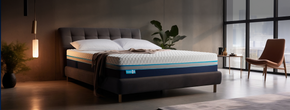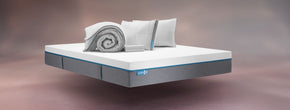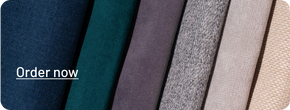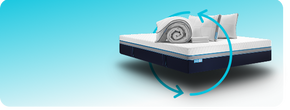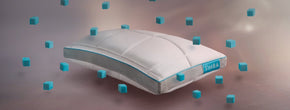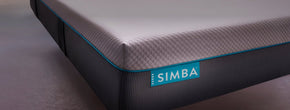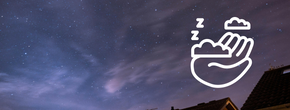What's Your Chronotype?

It’s tempting to think that with a great night’s sleep – especially on a Simba Hybrid®- you can supercharge your mornings and get ultra-productive from 6am. Regular, high quality sleep can certainly impact your creativity and productivity no matter what your daily pattern is, but can you change the kind of sleeper – and waker – you are? We turned to our resident sleep psychologist, Hope Bastine, for the answers.
What is a chronotype?
Our internal circadian system (or ‘master clock’) dictates when we wake up, when we go to sleep, and when we are most productive. It even determines when we should take naps! We call the pattern that we fall into a ‘chronotype’.
Scientists have discovered that our genetics play a part in determining our chronotype. This would explain why some people are night owls, while others are morning larks.
The four chronotypes
There’s no such thing as an official chronotype personality test, and the ‘types’ you see on the internet are primarily just neat ways of explaining sleeping habits. That said, it’s a useful way of understanding the four main variants - and we’re all for a bit of simplicity. These are the four chronotypes you’ll hear about most often:
- Lions - Lions are classic early birds; they naturally wake up early and get most of their work done in the morning. That means they’re tired in time for bed, and like to sleep fairly early.
- Wolves - Wolves (traditionally known as night owls) like to go to bed late and sleep in. They do their best work in the evening, when most other chronotypes have given up for the day.
- Dolphins - Dolphins find it hard to sleep well, as they’re easily woken and find it hard to stick to a routine. Early afternoon is the best time to get stuff done if you’re a dolphin.
- Bears - Bears represent almost half of the population. They feel tired when it’s dark, alert when it’s light, and fall asleep quite easily. If you’re a bear, you’re most productive mid-morning.
The science behind chronotypes
2017 Nobel laureates Doctors Jeffrey Hall, Michael Rosbash, and Michael Young identified that the ‘PER gene’ is responsible for proteins that accumulate in cells during the night and then diminish throughout the day.
It’s a bit complex but in a nutshell: if you have a long PER2/3 gene, you’re likely to be an early riser, needing seven to nine hours of shuteye to perform at your best. But If you have a shorter PER2/3 gene, you’re a late riser needing slightly less sleep. (Although that doesn’t mean you should be getting by on just five hours!)
Less than 3% of us have a rare genetic mutation that means we can get by on around six hours (or even less) of sleep a night and appear healthy. The research on this is fairly new, though, and we don’t know much about the long-term consequences.
Can you change your chronotype?
In short, no - you can’t change your chronotype, and you can’t become a morning person!
Of course, we’re very good at adapting to our circumstances in the short-term. When we wake up fatigued and lacking in energy we release a hormone called ghrelin that makes us hungry for foods that perk us up. However, when we chronically rely on instant energy from sugary foods, research reveals this is raising the risk of cardiovascular disorders, high blood pressure and diabetes.
It’s also possible for us to go against our biology in the short term, too. In our modern society, our ‘survival’ sometimes depends on our ability to perform at work and be productive. It’s not a good idea to ignore our chronotype for too long, though. When we get only six hours or less sleep per night, it takes us 1.5 times longer to accomplish a task. In addition, our cognitive abilities are reduced, and sleep deprivation can seriously affect our mood, too. That’s why it’s important to pay attention to our natural sleep habits.
Chronotypes and productivity
Businesses are increasingly getting wise to the impact of forcing all employees into standardised work hours regardless of their chronotype. Some companies that require shift work are beginning to change work patterns for more extreme chronotypes. And it’s getting easier to make the business case for flexible start times and working from home, as companies begin to realise that the time we spend away from work has a direct impact on what we do when we’re there. This could be as simple as flexible working time arrangements, like choosing your own core eight hours. It means early birds can power through the mornings, winding down just as those who get a creative boost in the afternoon get started.
Not only does this mean productivity and staff health and wellbeing are likely to significantly improve, but 'open for business' hours can be extended globally: a real win-win situation.
No matter when you’re sleeping or waking, it’s key to give yourself the best opportunity for a good rest. So as you’re thinking about tweaking your schedule to work with your chronotype, don’t forget to give your bedroom the once over to make sure it’s as set up for quality snooze as it could be. We can help with a mattress too. Ahem.
Chronotype tests
You can find your chronotype with online tests - or you could look at your sleep patterns with the Simba sleep quiz. Ultimately, it boils down to one simple question: if you had control of your day, with no caffeine or sedatives, when would you naturally wake up and fall asleep?
"Very comfortable!!"- Natalie F, Hybrid® Luxe Mattress
"Highly recommended"-Ajay K, Hybrid® Pro Mattress

